In my novel, The Flapper Affair: A 1920s Time Travel Murder Mystery Paranormal Ghost Romance, I include some fact and fiction tidbits that I used to inspire my writing journey. But you can read those in my novel. Today, I thought I’d share 13 1920s fun facts about the jazz era that influenced my writing and made me love the roaring twenties.
What 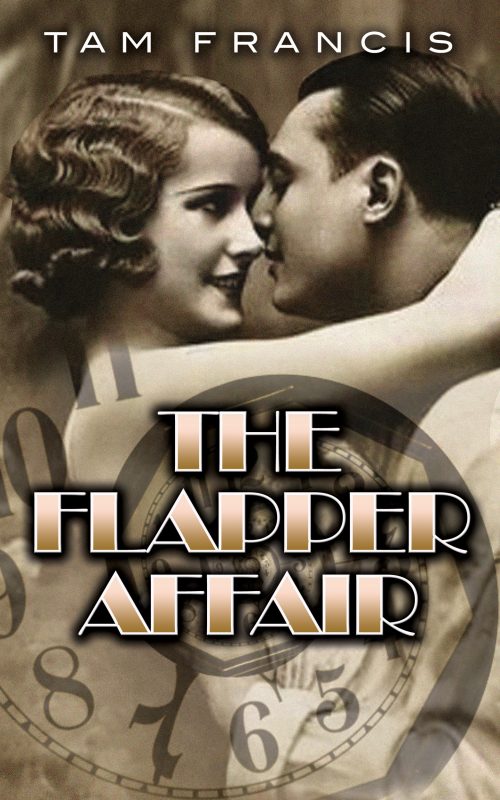 Defines the 1920s
Defines the 1920s
After the struggles and sacrifice of World War I, Americans had grown weary of self-denial, hard-work, and loss. They began to value leisure and hedonistic pursuits. New technological advances with new labor-saving inventions led to assembly line production for automobiles, widespread accessibility to telephones, radio, movies, and electricity.
New music called jazz gave rise to popular dances that featured independent, free-form, and improvisational dances. Even though the 1920s was set against a backdrop of prohibition, that didn’t stop revelers from pursuing their new ideas of leisure and excitement in speakeasies. The Roaring Twenties, lasting until the Great Depression in 1929.
1920s Fun Fact 1: Art Deco & Art
Art Deco style in architecture influenced fashion, furniture, home goods, and car design. The name came from the Exposition Internationale des Arts Décoratifs et Industriels Modernes, a worlds fair style exposition held in Paris in 1925.
Art Deco grew out of the Art Nouveau movement of Europe and combined modernist styles popular with the surrealist, cubism, and impressionist art movement, featuring strong geometric shapes, skewed and fantastical representations of life, but always sleek and sophisticated. Popular artists of the day were Picasso, Cezanne, Salvador Dali, Edward Hopper, John Marin and Charles Scheeler. The Chrysler Building is one of the most famous and stunning examples of Art Deco styled used in architecture.
1920s Fun Fact 2: Inventions
1920s inventions and innovations included automobiles, washing machines, refrigerators, vacuum cleaners, radios, pop-up toasters, talking pictures (Soundies or Talkies), phonographs, records, and electricity. It’s hard for us to imagine today, but before the 1920s, most homes used a combination of gas-lamps and coal to illuminate and heat their homes. Access to electricity provided Americans with the power required to run new devices and appliances such as refrigerators, washing machines, electric razors, vacuum cleaners, electric irons, and especially radios and gramophones that helped proliferate and bring the new jazz sounds home. The setting for my novel, which ultimately becomes a museum famous for it’s Art Deco style is one of the first homes to have electricity and indoor plumbing.
1920s Fun Fact 3: Hollywood
Situated in the hills of Los Angeles and due to its temperate climate, Hollywood California became the ideal location for making movies. By the 1920s 85% of U.S. movie production was made in or around Hollywood driven by the big four movie companies: Warner Brothers, Paramount, MGM, and United Artists. At the end of the Roaring Twenties, Hollywood was cranking out over five hundred movies a year. The early movies were silent, black and white films that contained dialogue snippets interspersed between action with most movie houses providing organ or piano accompanists.
The early twenties ushered in many cinematic innovations. In 1922 the first color movie, Toll of the Sea, was released. Not long after a movies called Don Juan, (Warner Bros) combined music and sound affects for the first time. Finally in 1927 Al Jolson in The Jazz Singer, heralded the age of talkies. That success was followed by Walt Disney’s Steamboat Willie in 1928, introducing the world to the much now beloved, Mickey Mouse.
Cinema provided a cheap form of entertainment for the masses and by 1929, approximately 100 million Americans were going to the movies.
1920s Fun Fact 4: Dance
Even though the older dances like the Waltz and Foxtrot remained popular, newer, wilder dances were increasingly sought after. Due to the ushering in of the Jazz Age, party-goers needed new dances that reflected the freer sound of the hot jazz music. The Lindy Hop had it’s origins in the 1920s, a descendant of the Charleston whose popularity spanned the globe. Other top dances were the Black Bottom, the Shimmy, Turkey trot, Cake walk, Bunny hop, and the American Tango.
The 1920s saw the invention of the Marathon Dance also known as endurance contests. The idea of a way to earn quick cash and notoriety swept America. A dance marathons is an events in which people dance or walk to music for an extended period of time, and usually the last one standing wins. The concept called a derby in England can be traced back to 1300s London. Before we had reality shows, dance marathons blurred the line between reality and dramatics.
1920s Fun Fact 5: Literature
In the literature of the Roaring Twenties, American poets, playwrights, and authors challenged long-held story structure and subject matter, reflecting the new modern lifestyle and sentiments. Several artists, musicians, and writers returned from the war disgusted with the blatant consumerism while others drowned themselves in the heady wild abandon of the jazz age. The famous authors of the period included F. Scott Fitzgerald, Ezra Pound, Eugene O’Neill, Ernest Hemingway, Langston Hughes, William Carlos Williams, Amy Lowell, Sinclair Lewis, William Faulkner, T.S. Eliot and Zora Neale Hurston. Many of my personal favorites make this list. My character, Eduard, in The Flapper Affair was highly influenced by Fitzgerald.
1920s Fun Fact 6: Trains, Planes, & Automobiles
By 1908, Henry Ford had created the Model T by using his newly innovative assembly line technique. This made his production costs lower which in turn made his cars cheaper and more affordable to the average household. By 1927, Ford had sold 15 million Model Ts which revolutionized the American way of life. Family cars allowed rural, farm, and country communities to interact with different types of people.
Airplanes help break social barriers by uniting far parts of America. Then in 1927 Charles Lindbergh showed the world that international flight was possible when he gained worldwide fame as the first pilot to fly solo and non-stop across the Atlantic Ocean in the Spirit of Saint Louis. Many Lindy Hop origin-stories cite Lindbergh’s flight with the naming of Lindy-hop, though there are many competing theories that it had nothing to do with Lucky Lindy’s hop across the Atlantic. (Another fun tidbit, is that Lindy’s flight or hop DID inspired the title for the second book in the Jitterbug Dress series: The Girl in the Jitterbug Dress Hops the Atlantic).
1920s Fun Fact 7: Harlem Renaissance
Because of Harlem’s jazz scene and progressive integrations, Harlem became the African-American center for artistic and literary culture in the 1920s. After WWI, many African-Americans began leaving the farms and rural communities of the south, moving to northern destinations and city jobs. Many of these African-American migratory workers found their new home in the diverse and thriving New York neighborhood of Harlem.
The movement has its roots in W.E.B. Du Bois’s The Souls of Black Folk (1903) and his founding of the magazine The Crisis (1910); it developed with Opportunity: A Journal of Negro Life, founded by the National Urban League (1922) and edited by Charles S. Johnson. James Weldon Johnson called Harlem the Negro capital of the world.
In 1926, Langston Hughes published The Negro Artist and the Racial Mountain, an essay which provided the Harlem Renaissance with its manifesto as Hughes cried for both artistic independence and racial pride. “We younger Negro artists who create now intend to express our individual dark-skinned selves without fear or shame.” He also chastised the black middle-class for ignoring their own culture in an attempt to appear elite.
Beside Hughes, other poets: Claude MacKay and Countee Cullen contributed to the new, modern poem and its perspective. They felt poetry should be simple, direct, and easily comprehended, shunning, sentimentality, didactic writing, stilted diction, and romantic escapism. They experiment with different beats and rhythms eschewing long established structure rules, modeling black speech patterns, neighborhood rhythms, and jazz music. Check out The Wild Party for a fine example of using jazz rhythm in prose.
The Cotton Club was one of the most famous Harlem hot spots and musicians flocked to play there. The club was host to: Louis Armstrong, Duke Ellington, Cab Calloway, Ethel Waters and more. The featured music was influenced by Dixieland but quickly melded into the new blues and improvisational style of music called Jazz. The Flapper Affair touches on these artists and that style of music throughout the novel.
1920s Fun Fact 8: Radio
With the commercialization of radio receivers for the home, jazz was brought into America’s living room. It was the first mass broadcasting medium that drew the nation together by breaking down provincialism. The Roaring Twenties radio programs spread modern ideas and brought news, music, entertainment, and advertisements to millions of listeners. The first on-air radio station went live in November of 1920, KDKA. Just two short years later, five hundred radio stations had popped up throughout America, and by the decade’s end over hundred million radios stations were broadcasting in households and businesses.
Fun Fact 9: The New Woman
The suffrage movement had prevailed and given women the right to vote with the 1920s enactment of the 19th Amendment. These new women found new opportunities open to them. They began attending college in record numbers, joining the workforce in various careers, driving cars, and experimenting with their place and status in society. With accessible transportation and control over their earned wages, many women challenged traditional values and swapped them for the modernist ideas of non-conformity and freedom.
The older and more traditionalist clung to the trappings of the previous age and conflicted with the new modern Flapper. The traditionalist women believed the Flappers were in moral decay as they drove, drank, danced, smoked cigarettes, and wore less confining clothing (throwing out the corset for one).
1920s Fun Fact 10: Fashion
WOMEN
As social conservatism ebbed down, hemlines went up. Women’s hem-lengths moved from the ankle to knee length with fringed and beaded dresses for the evening’s revelry to smart pleats and gathers for office. Women cut their hair with the most popular style being the bob, worn curly or straight. For nighttime frolicking, Women’s fashion included long strands of pearl beads, cigarette holders, feathered, pearled, or jeweled headbands, and feather boas. They sported silk or rayon stockings, held in place by pretty garters.
Prior to the 1920s, make-up and cosmetics were not a mainstay in acceptable society, and its usage was associated with those of loose morals or prostitution. With access to movies and screen magazines, the woman wanted to look like the stars them emulated. Icons like Joan Crawford and Clara Bow were celebrity flapper who encouraged the average woman to wear make-up. As an interesting side note, we named our daughter after Clara Bow (we love her style and loved her name)!
Women didn’t stop at just adding make-up, they plucked their brows into a thin line and used eye pencil to lengthen and darken into a side arc over each eye. Lipstick was added in what was called a cupid’s bow, and rouge helped make the cheeks (and knees!?!) glow! Women wore satin and leather shoes, sometimes ornately decorated with low-heels.
MEN
Men were clean-shaven with the exception of the pencil mustache. Patent-leather hair plastered the head in slicked-down close coifs, resembling the shine on a patent leather shoe with hair parted middle or side.
Men wore tailored pinstriped suits, fitted to the body to emphasis broad shoulders and trim waists. Silk shirts and polished cotton with collars were worn under suits or with vest, handkerchiefs poking out of the pocket. Men topped off their ensembles with fedora hats, suspenders, bow ties, black patent leather shoes and spats. For the collegiate and young set, the men could often be seen in outrageous plaid, wide-legs trousers with thick cuffs, and the sporty attire of sweaters, sweater vests, and knickerbockers. Men wore a variety of captoe, spectator, and plain-toe shoes, but for a fancy evening out they wouldn’t be caught dead without their spats.
1920s Fun Fact 11: Prohibition, Gangsters & Crime
The backlash to the wild abandon of the Jazz Age flappers and fops was the temperance movement. In the Prohibition Era, the manufacture and sale of alcohol was banned. This was brought on by the ratification of the 18th Amendment and enacted by the Volstead Act.
Of course people did not quit drinking, they just took it underground–so to speak. Thus the speakeasy was born (so named because patrons had to whisper code words to enter the illegal drinking clubs). Speakeasies were saloons or nightclubs who sold alcoholic beverages illegally during the period of Roaring Twenties Prohibition. Prohibition opened the door to unintended consequences of bootleggers, gangsters, and the rise of organized crime.
The Prohibition Gangsters were violent men who created rackets and territories in which they not only sold illegal booze to the clubs, but offered them protection from the police or rival gangs. Gangsters came from many different types of immigrants, from the Italians, to the Dutch, the Irish, and others. Gangsters often made the papers and led a glamorous lifestyle with colorful names like Al Scarface Capone, George Bugs Moran, Charles Lucky Luciano, Dutch Schultz, and Jack Legs Diamond.
Having a fascination with this era and into the 1940s, I was inspired to add a gangster element in both The Flapper Affair, and Hops the Atlantic.
1920s Fun Fact 12: Hot Jazz
The wild age, needed new wilder music. Fueled by fast cars and faster drinks, New Orleans musicians began to move north to Chicago and New York, bringing with them their brand of blues, melding with ragtime to create a new jazz sound. Not only was this new jazz music available for club-goers, but with the new and easier process of recording and reproducing those recordings, a much wider audience was reached. And early evolution of the music can be heard in the 1921 James P. Johnson’s recording: Carolina Shout where it bridged the gap between ragtime and more advanced jazz styles.
Not long after, bigger bands began to form to include more instrumentation. Duke Ellington had moved to New York in 1923 and brought his innovative style with him, eventually garnering the gig as the Cotton Club house band. With the addition of musicians like Coleman Hawkins, Fletcher Henderson and Louis Armstrong, new original and improvisational jazz sound grew. This can be heard on many of the recording from Okeh Records.
1920s Fun Fact 13: Terms, Phrases & Slang
Each era has it’s slang terms, sayings, and idioms, but the 1920s gave birth to many terms we still use in our every day language. I tried to incorporate much of the slang into the Flapper Affair where appropriate without overdoing it.
- flappers
- gun molls
- speakeasies
- jazz
- hooch
- big cheese
- jazzbos
- bootlegger
- Reds
- cat’s whiskers, cats meow, cats pyjamas
- the bee’s knees
- gatecrasher
- crush
- scram
- lounge lizards
- stool pigeons
- tommy gun
- Dirty rat
::
Do these facts make you want to read The Flapper Affair? Do you have an fave flapper/gangster movies. What’s your fave 1920s song. Do you think the 1920 women were progressive or foolish?
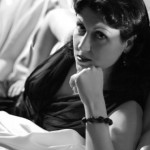 Tam Francis is a writer, blogger, swing dance teacher, avid vintage collector, and seamstress. She shares her love of this genre through her novels, blog, and short stories. She enjoys hearing from you, sharing ideas, forging friendships, and exchanging guest blogs. For all the Girl in the Jitterbug Dress news, give-aways, events, and excitement, make sure to join her list and like her FB page! Join my list ~ Facebook page
Tam Francis is a writer, blogger, swing dance teacher, avid vintage collector, and seamstress. She shares her love of this genre through her novels, blog, and short stories. She enjoys hearing from you, sharing ideas, forging friendships, and exchanging guest blogs. For all the Girl in the Jitterbug Dress news, give-aways, events, and excitement, make sure to join her list and like her FB page! Join my list ~ Facebook page

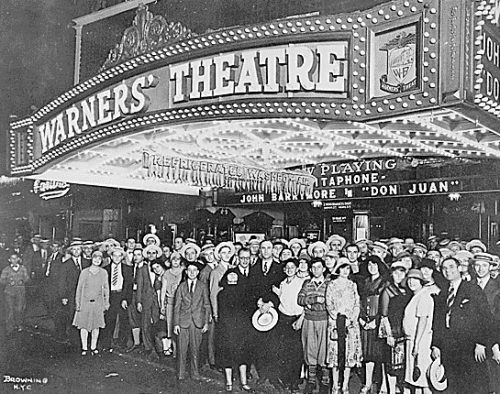
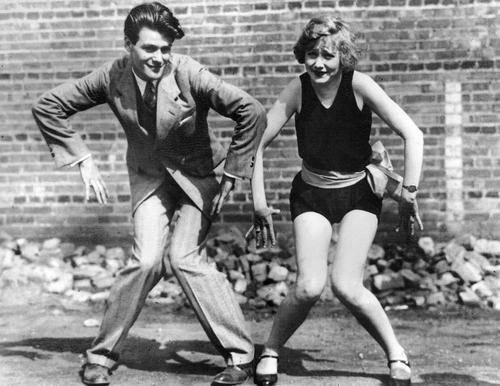
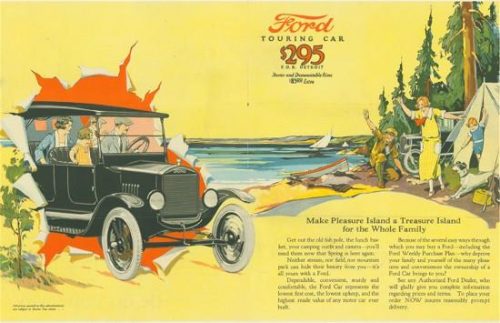
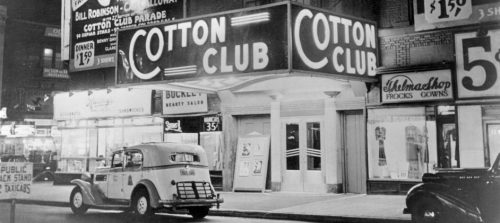
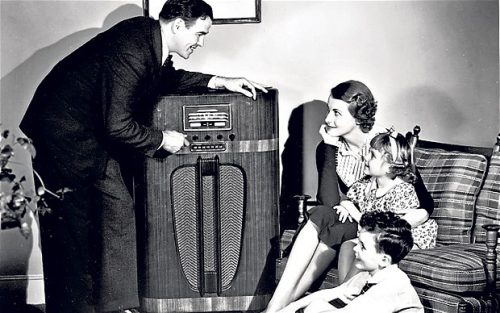
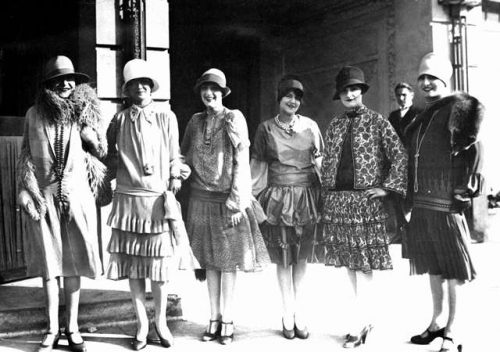
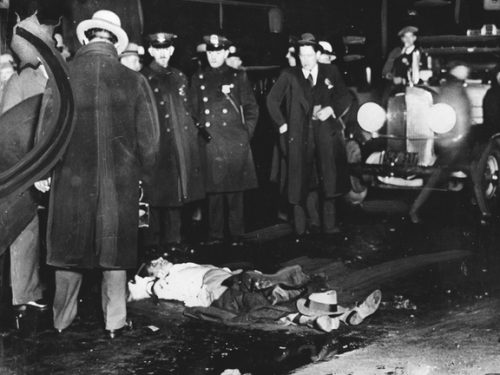
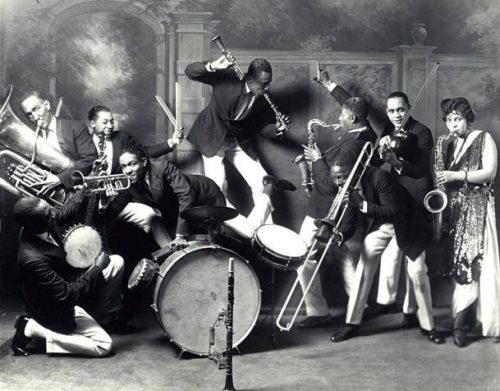
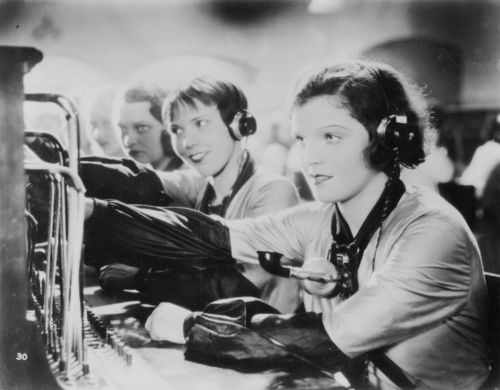
Love this! I put on swing dancing events in Los Angeles. How can I contact you?
Best,
Kaylee
That’s a fine dozen factoids about the ’20’s. I didn’t know radios spread so fast through the 20’s, and I sure didn’t know any of the dance and music stuff. Thanks, Tammy. And I loved The Flapper Affair novel.